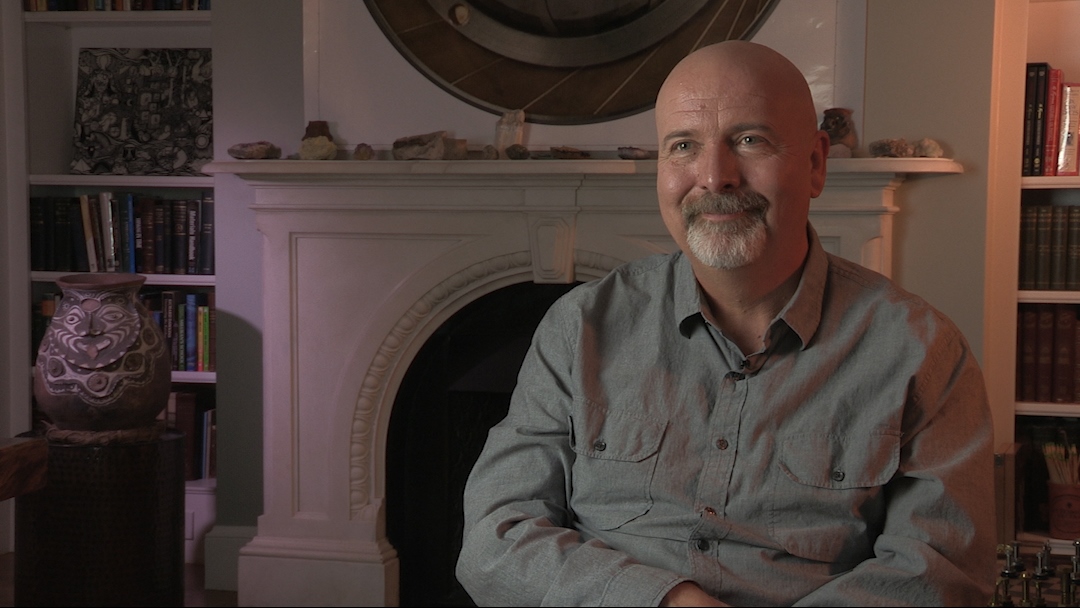NEXT STORY

Building my first computer for the science fair
RELATED STORIES

NEXT STORY

Building my first computer for the science fair
RELATED STORIES


|
Views | Duration | |
|---|---|---|---|
| 21. Life in Calcutta, India | 150 | 03:58 | |
| 22. The servants came with the house | 126 | 02:46 | |
| 23. Friendship with my driver, Pratap | 138 | 01:03 | |
| 24. Living across the road from a Yugoslav spy | 129 | 01:44 | |
| 25. An uncaring school principal | 136 | 01:51 | |
| 26. A chemistry lab experiment goes wrong | 144 | 02:06 | |
| 27. Building my first computer for the science fair | 132 | 03:04 | |
| 28. Receiving a special award from Jyoti Basu | 129 | 01:36 | |
| 29. My first romantic kiss | 141 | 01:52 | |
| 30. Unscheduled visit to a game reserve | 113 | 03:39 |


And then we decided to have a science fair. Because I'd always wanted a science fair and I'd never lived in a place that had a science fair. So we organised a science fair. And we had a very good science teacher, Mrs Sinha. And so she was supportive of this, and we had fantastic laboratory, a fantastic chemistry laboratory. And you know, it was really great equipment in the school, not very many teachers used it. But Mrs Sinha was very happy to let us use the chemistry lab. So I went and started experimenting with all the great glassware in the chemistry lab. And one thing I found was this great sulphur dioxide generator. I don't know how I figured out what it was. But you put iron sulphide and sulphuric acid in it. And if you arranged it right you could just turn on the spigot and it would let the sulphur dioxide out which you could use for analytic chemistry.
And then it would raise the sulphur dioxide to the level of the iron oxide and then generate some gas and push it back down. So it was a great system that would generate sulphur dioxide whenever you needed it. And this wonderful teacher actually taught us analytic chemistry from this. And so we would get substances and we would have to analyse them, it was really fantastic chemistry education. And... But I decided to hook up the sulphur dioxide generator, but I hooked it up upside down with the iron sulphide on the bottom, I didn't quite understand the principle of it. So you couldn't turn it off. So we had to evacuate the entire school because it smells like rotten eggs. While they ridded of the sulphur dioxide generator.
W Daniel Hillis (b. 1956) is an American inventor, scientist, author and engineer. While doing his doctoral work at MIT under artificial intelligence pioneer, Marvin Minsky, he invented the concept of parallel computers, that is now the basis for most supercomputers. He also co-founded the famous parallel computing company, Thinking Machines, in 1983 which marked a new era in computing. In 1996, Hillis left MIT for California, where he spent time leading Disney’s Imagineers. He developed new technologies and business strategies for Disney's theme parks, television, motion pictures, Internet and consumer product businesses. More recently, Hillis co-founded an engineering and design company, Applied Minds, and several start-ups, among them Applied Proteomics in San Diego, MetaWeb Technologies (acquired by Google) in San Francisco, and his current passion, Applied Invention in Cambridge, MA, which 'partners with clients to create innovative products and services'. He holds over 100 US patents, covering parallel computers, disk arrays, forgery prevention methods, and various electronic and mechanical devices (including a 10,000-year mechanical clock), and has recently moved into working on problems in medicine. In recognition of his work Hillis has won many awards, including the Dan David Prize.
Title: A chemistry lab experiment goes wrong
Listeners: George Dyson Christopher Sykes
Christopher Sykes is an independent documentary producer who has made a number of films about science and scientists for BBC TV, Channel Four, and PBS.
Tags: sulphur dioxide, chemistry, experiment, science fair, iron dioxide
Duration: 2 minutes, 6 seconds
Date story recorded: October 2016
Date story went live: 08 August 2017